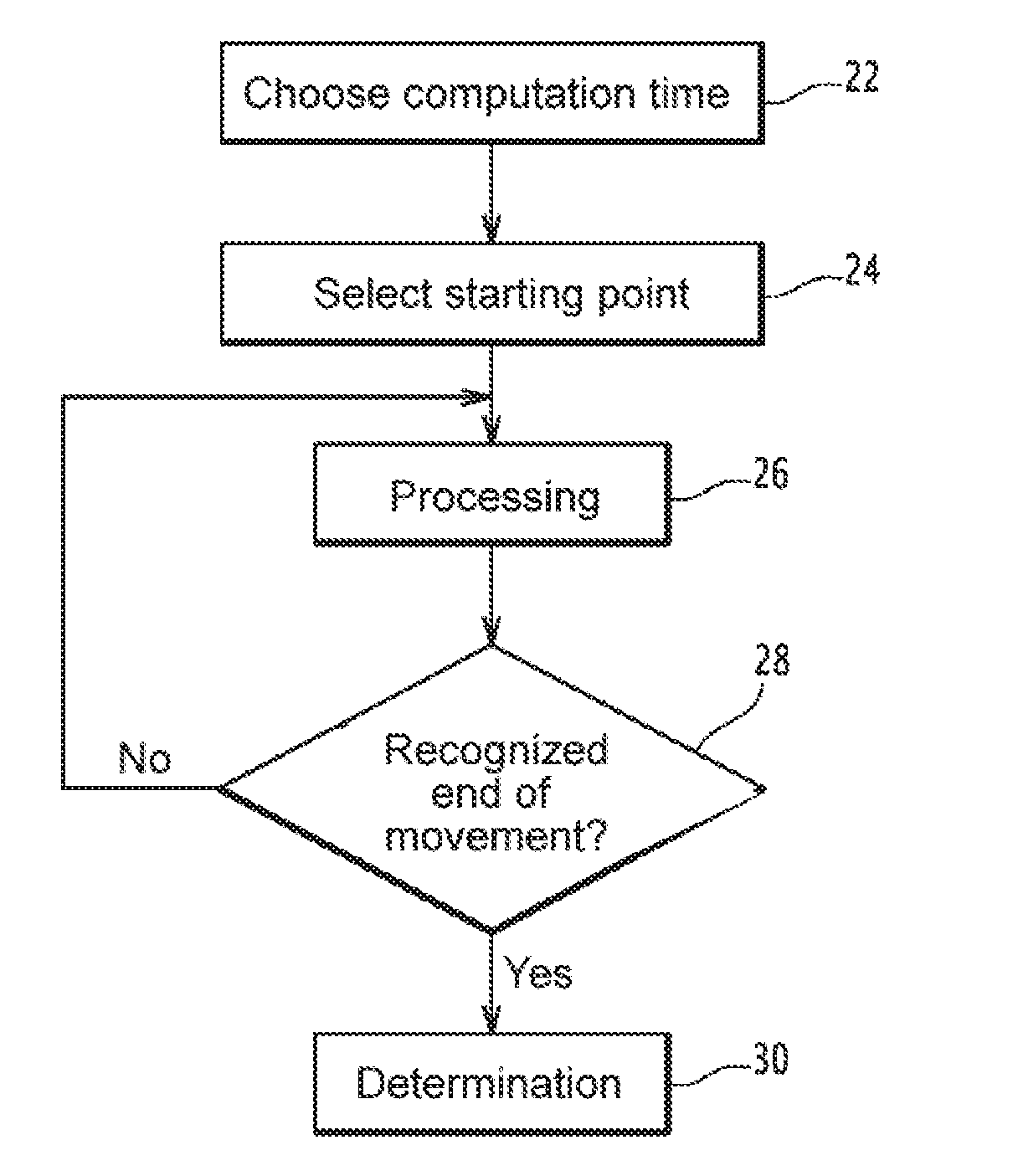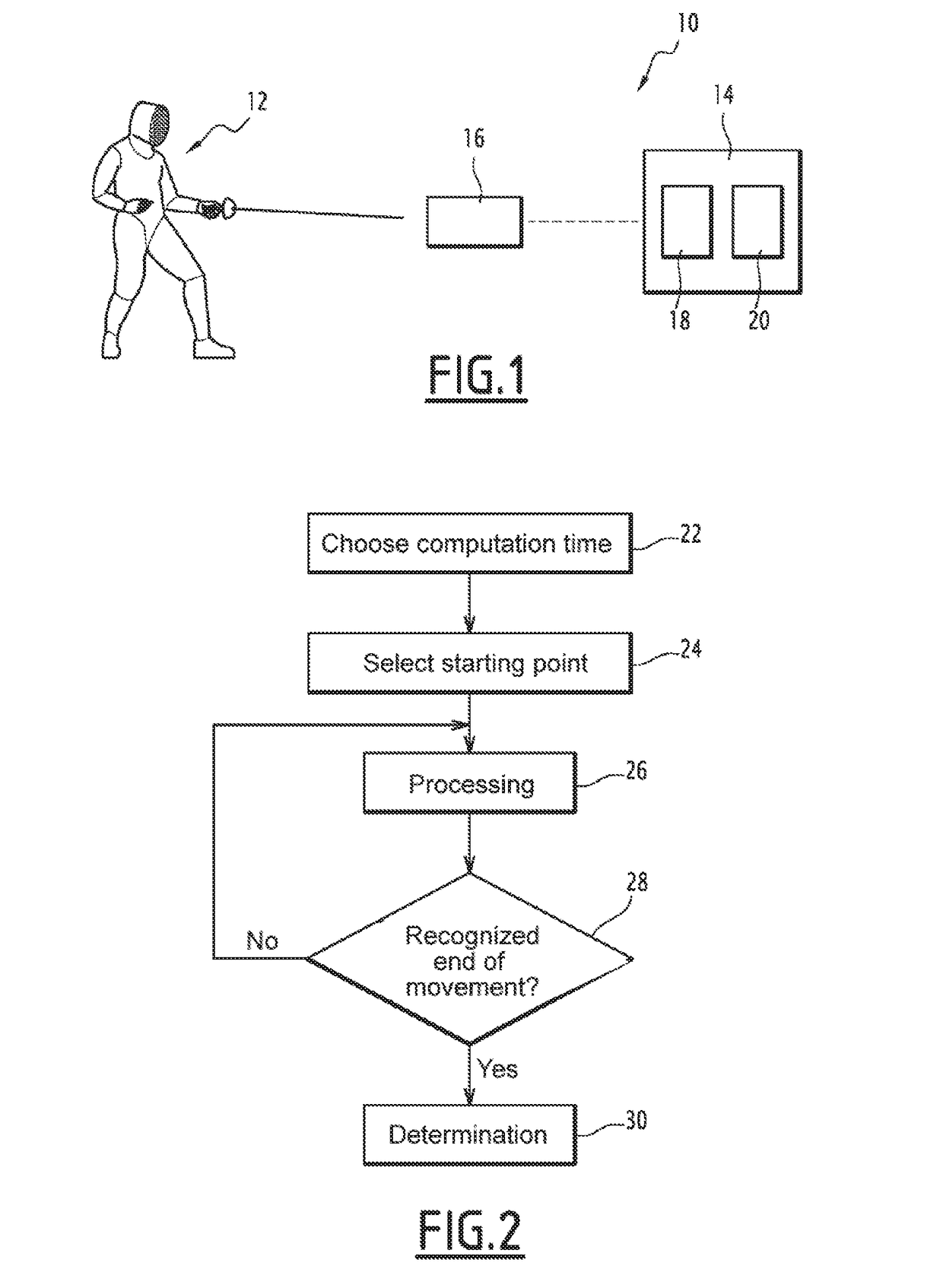Method of identifying a movement by quantified recursive bayesian filtering
a recursive, quantified technology, applied in the field of identifying, a movement of a human being, can solve the problems of long computing time and too slow identification of movements for video game applications
- Summary
- Abstract
- Description
- Claims
- Application Information
AI Technical Summary
Benefits of technology
Problems solved by technology
Method used
Image
Examples
first embodiment
[0158]The operation of the system 10 will now be described in reference to FIGS. 2 to 4, which illustrate an example implementation of the method for identifying the movement to be identified according to a
[0159]FIG. 2 more specifically shows the iterative architecture of the proposed identification method. FIG. 2 is more specifically described below.
[0160]The identification method includes a step 22 for choosing a computation time interval.
[0161]According to one embodiment, step 22 is carried out by having an operator enter a computation time interval. Alternatively, the computer 14 is able to determine the computation time interval automatically. In particular, when the computation points are replaced by averages, an excessively short computation time interval does not allow a real-time computation, while with an excessively long computation time interval, the central trend moves away from the actual shape of the movement and a movement change by the player 12 may not be detected....
second embodiment
[0238]the identification method is now described in reference to FIGS. 2 and 5.
[0239]The architecture of the flowchart of FIG. 2 is retained for the second embodiment of the identification method.
[0240]As a result, as for the first embodiment of the identification method, the identification method according to the second embodiment also comprises a step 22 for choosing a computation time interval, a step 24 for selecting a starting point, a processing step 26, a step 28 for recognizing the end of the movement by the player 12 and a step 30 for determining the reference movement(s) or the series of reference movement parts representative of the movement by the player 12. The step 22 for choosing a computation time interval and the step 28 for recognizing the end of the movement by the player 12 are identical to the preceding description. The associated features are not repeated for the description of the identification method according to the second embodiment, but also apply.
[0241]O...
third embodiment
[0256] optionally used in combination with one or several of the preceding embodiments, between all of the paths ending with a point belonging to the same reference kinematic, only the path with minimum energy is retained. Preferably, several paths are retained: at least, per reference kinematic, one path whose last point belongs to that reference kinematic. As an example, according to the second rule, if a point deduced at the end of the deducing sub-step 106 belongs to two different paths, only the path whose series of points has a minimal energy is selected. This makes it possible to reduce the number of authorized paths and thus to accelerate the computation.
[0257]Preferably, the definition of the minimum energy used in the selection sub-step 108 is the same as the definition of the minimal energy used during the implementation of the deducing sub-step 106.
[0258]According to one embodiment, the determination step 30 of the identification method according to the second embodiment...
PUM
 Login to View More
Login to View More Abstract
Description
Claims
Application Information
 Login to View More
Login to View More - R&D
- Intellectual Property
- Life Sciences
- Materials
- Tech Scout
- Unparalleled Data Quality
- Higher Quality Content
- 60% Fewer Hallucinations
Browse by: Latest US Patents, China's latest patents, Technical Efficacy Thesaurus, Application Domain, Technology Topic, Popular Technical Reports.
© 2025 PatSnap. All rights reserved.Legal|Privacy policy|Modern Slavery Act Transparency Statement|Sitemap|About US| Contact US: help@patsnap.com



